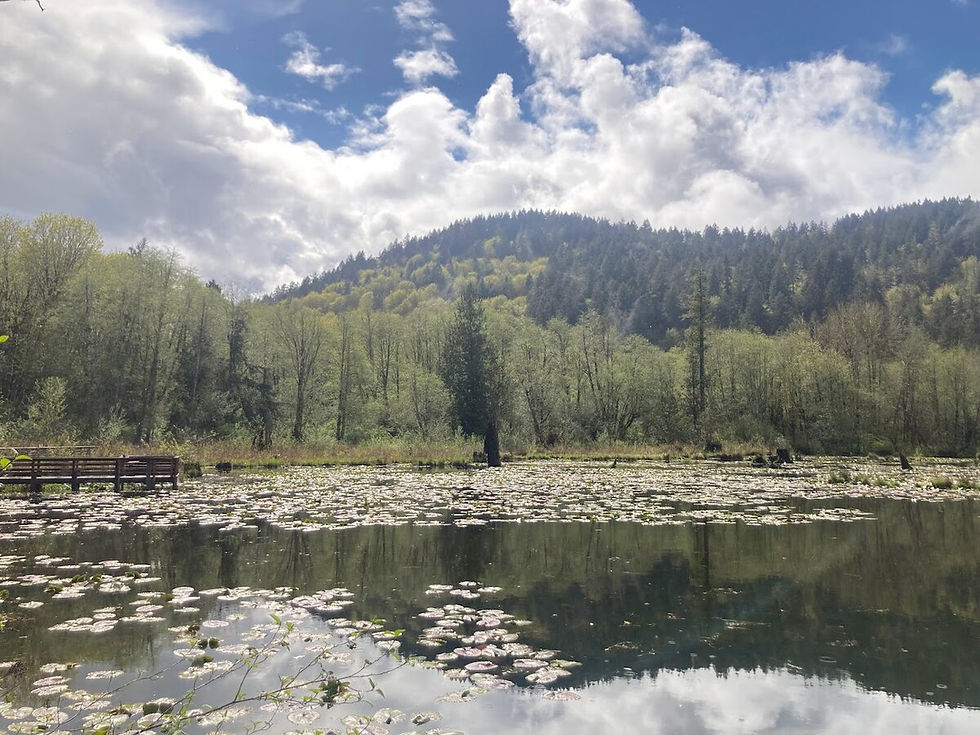Washington Looks to Ecosystem Service Markets to Support Public Lands and Climate Goals
- Greene Team

- Jun 30, 2025
- 2 min read
Updated: 5 days ago

Greene Economics helped DNR prioritize forest carbon, wildfire prevention, and water markets—supporting trust beneficiaries and creating a roadmap for climate-smart land stewardship.
Washington’s public lands face a growing challenge: how to generate revenue for trust beneficiaries—such as schools and local governments—while advancing climate goals and protecting ecosystems. Greene Economics partnered with the Washington State Department of Natural Resources (DNR) to evaluate which emerging ecosystem service markets could provide meaningful opportunities now and in the near future.
Currently, DNR generates revenue through timber sales and leases for agriculture, grazing, and aquaculture. This evaluation explored new ecosystem service markets with potential revenue from carbon sequestration, habitat and biodiversity, water leasing, and emerging avoided wildfire emissions (AWE) credits.
The most promising opportunities include forest carbon offset projects (supporting improved forest management), avoided wildfire emissions credits (funding forest health and reducing fuel treatment work), and water quantity markets (showing strong potential for water leasing once rights are clarified). Other markets, like biodiversity or blue carbon, face cost, policy, or maturity hurdles today but may offer opportunities as conditions evolve.
Greene Economics led the project with support from CTEH/Montrose and the Spatial Informatics Group. Our team created a comprehensive resource and asset inventory, produced a marginal abatement cost curve (MACC) to rank carbon strategies by cost and impact, and evaluated DNR’s potential participation in emerging markets. An external advisory group—including Tribes, trust beneficiaries, agency staff, and market experts—provided independent guidance and regularly reviewed findings to ensure rigor and relevance.
“Developing ecosystem service credit projects is highly site- and market-specific,” said Bea Covington, Sustainability & ESG Director at Greene Economics. “The challenge for DNR—and for any state managing lands held in trust—is balancing the need to generate revenue for trust beneficiaries with protecting and enhancing environmental and social benefits. Our team also developed a market alignment framework to help DNR assess when and where ecosystem service market projects make economic and policy sense. It’s a tool they can use now and adapt as markets evolve.”
This work is part of a broader effort to explore innovative approaches to managing state lands. By identifying markets that can complement traditional timber and lease revenue, DNR aims to support schools, local governments, and other trust beneficiaries while advancing climate-smart stewardship and healthy ecosystems. The department plans to deliver a final legislative report with recommendations later this summer, providing a roadmap for how ecosystem service markets could play a role in Washington’s public lands management.
The project was authorized by the 2023 Washington State Operating Budget and funded by the Climate Commitment Act, giving DNR the legislative and financial support needed to explore participation in ecosystem service markets.
Read the Ecosystem Service Inventory and Asset Plan or explore the DNR Ecosystem Services Work Group.
.png)


